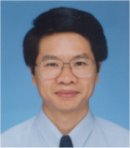|
|
Plenary Lecture
A Weakened Weak (W2) Formulation for Certified Solutions with Bounds,
Real-Time Computation and Inverse Analysis of Biomechanics Problems

Professor Gui-Rong Liu
Centre for Advanced Computations in Engineering Science
Department of Mechanical Engineering, National University of Singapore
9 Engineering Drive 1, Singapore 117576
Singapore-MIT Alliance (SMA), E4-04-10
4 Engineering Drive 3, Singapore, 117576
E-mail: mpeliugr@nus.edu.sg
Abstract:
This paper introduces first a weakened weakform (W2) using a generalized
gradient smoothing technique for an unified formulation of a wide class
of compatible and incompatible displacement methods including settings
of the finite element methods (FEM) and meshfree methods of special
properties including the upper bound properties. A G space is first
defined to include discontinuous functions allowing the use of much more
types of methods/techniques to create shape functions for numerical
models; Properties and a set of important inequalities for G spaces are
then proven in theory and analyzed in detail. We prove that the
numerical methods developed based on the W2 formulation will be
spatially stable, and convergent to exact solutions. We then present
examples of some of the possible W2 models, and show the major
properties of these models: 1) it is variationally consistent in a
conventional sense, if the solution is sought in a H space (compatible
cases); 2) it passes the standard patch test when the solution is sought
in a G space with discontinuous functions (incompatible cases); 3) the
stiffness of the discretized model is reduced compared to the FEM model
and even the exact model, allowing us to obtain upper bound solutions
with respect to both the FEM and the exact solutions; 4) the W2 models
are less sensitive to the quality of the mesh, and triangular meshes can
be used without any accuracy problems. These properties and theories
have been confirmed numerically via examples solved using a number of W2
models including compatible and incompatible cases.
An NS-PIM model is then used to establish a real-time computation
procedure based on the reduced basis approximation. The real-time
computation model is then used to inversely identify the interface
property of a dental implant system.
|
|
|